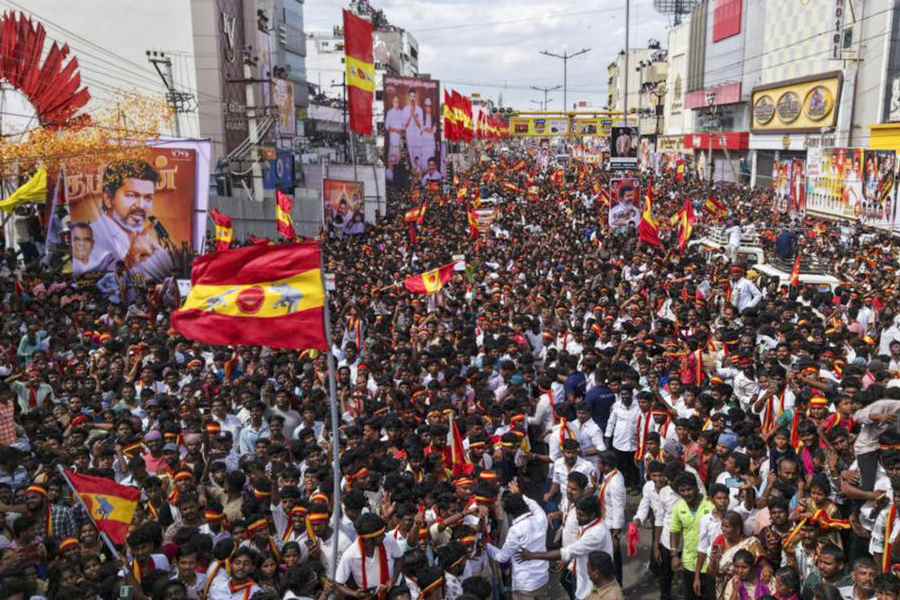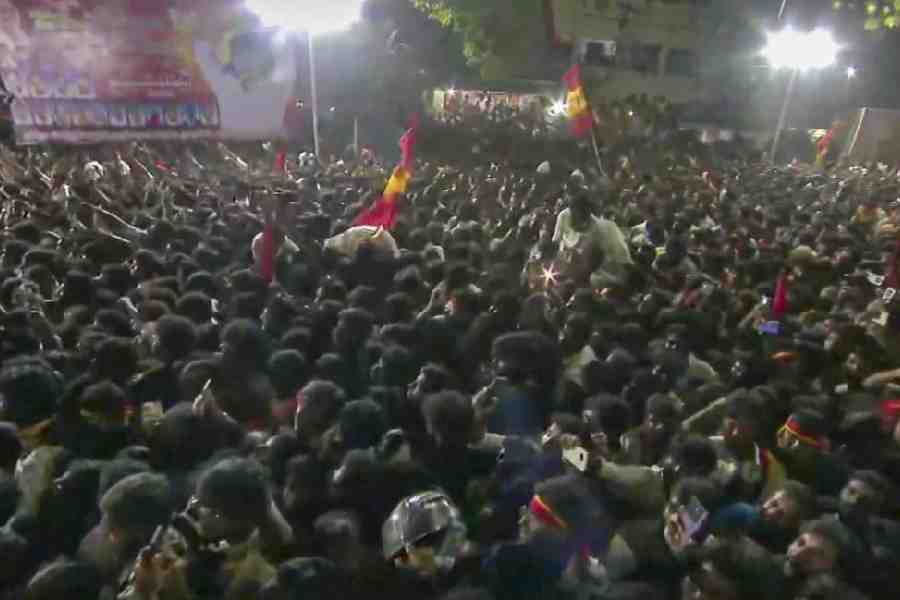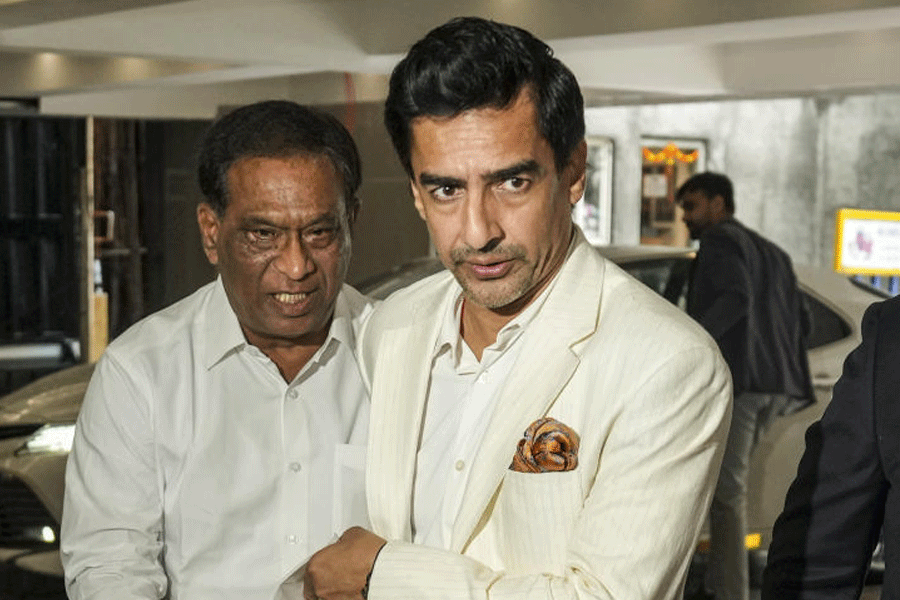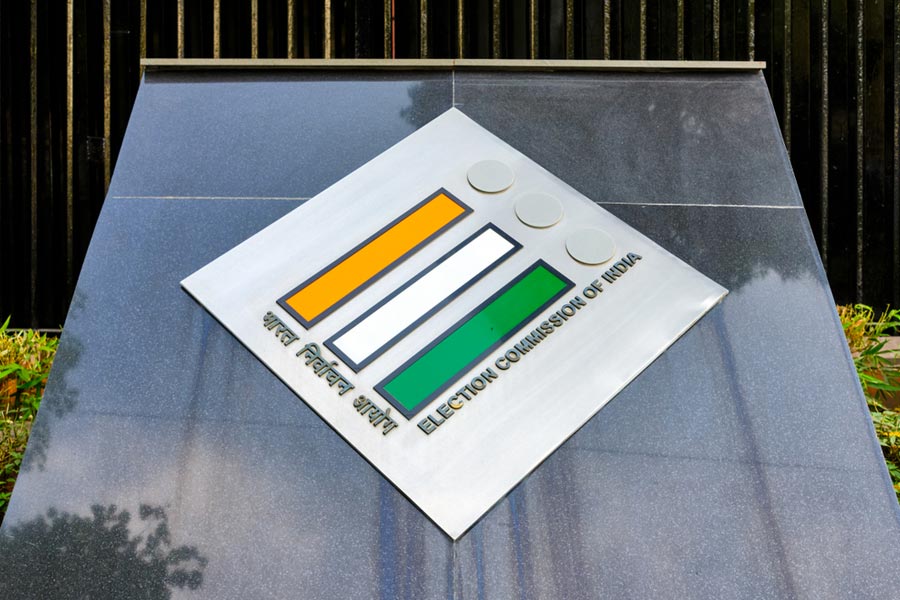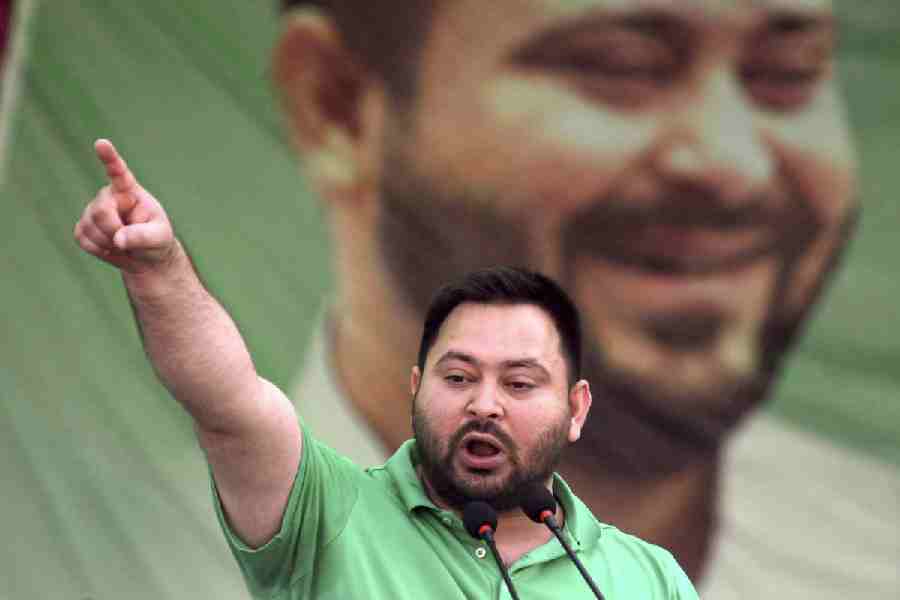 |
Dennis Keith Lillee is in great form. Towering over the average Lilliputian mortal with his tall, muscular frame, the former Australian fast bowler comes across as extremely fit and strong. A prominent moustache makes up for a bald pate. You are suddenly conscious of being in the presence of a sports legend — a tearaway fast bowler who was once at the heart of the “invincible” Australian cricket team.
The former coach of MRF Pace Foundation, Chennai, is a surprise. One thought he’d be difficult to approach. But he turns out to be friendly — agreeing to be interviewed while emerging out of the training grounds of the MRF Foundation. And one feared he’d be brash and bold. Instead, he minds his words, and makes it a point not to offend anybody.
Lillee is getting ready to bid goodbye to Chennai. It was here, on a night about town, that he would unwind over the “poetic” songs of his all-time favourite singer-composer Leonard Cohen and a “really chilled beer”. Lillee, who spends his time in Australia modelling for TV and print advertisements and caring for his business interests, has been visiting Chennai at least thrice a year for the past 25 years, in his capacity as co-founder and coach at the MRF Pace Foundation. But he recently ended his long association with the Chennai-based internationally renowned sports institution, which has produced the likes of Javagal Srinath, Zaheer Khan and Munaf Patel.
He is sad about leaving the foundation but believes it’s time to move on. “I felt if I let myself go stale, the boys here would not get the best,” he says. The former cricketer now plans to start an online coaching programme.
“There was scant knowledge of fast bowling in India when we started,” observes Lillee. “The training was all wrong, there were no techniques and no gymnasiums,” he continues. With the exception of a Kapil Dev, there was no background of fast bowlers of repute in the 1980s. And so, along with the late industrialist Ravi Mammen of MRF, Lillee helped script the story of the foundation. “I changed the entire methodology and approach to fast bowling,” he says.
And when it comes to bowling, Lillee knows what he’s talking about. During the peak of his career in the early 1970s, he suffered from stress fractures in his back and was forced to take a year off. When he returned with renewed force, he had perfected his bowling style to suit his body. “Everyone has got an individual style they are born with. All I do is hone that. I don’t change someone’s actions dramatically; I just make it more efficient and make sure there is less chance of them getting injured. I teach them to make their bowling action safer,” he says.
Cricket experts have been voicing some criticism about the MRF Foundation in recent years. Though it has produced 16 bowlers of repute in the last 25 years, it has not groomed anybody spectacular in the recent past. A steely note creeps into Lillee’s voice when the question is put to him. “When you say recent past, do you mean yesterday,” he asks. “The MRF Foundation is respected by the world — even Australians send their cricketers out here to train,” Lillee says, squashing any further queries on the issue.
“India has plenty of fast bowlers,” he continues. “The only thing is a bowler can bowl as fast as what his body is capable of. You are born to bowl fast or not — it’s not something you can build up in someone. At the most, you can make sure they improve their style,” says Lillee, who rates South African right arm fast bowler Dale Steyn as the best in the world today.
Is it true that Lillee had criticised MRF Foundation protégé Munaf Patel? “I did not criticise Munaf. I only said I was surprised he was bowling at 145km per hour and suddenly, he dropped to a speed of 135km and then 128km — all within a year. I could not figure out why. I don’t know if someone had told him to slow down or told him it would be better to place the ball at the right spot than move fast. I was sad. If someone could bowl at 145km per hour, and that’s a great asset, why should he lose it?”
Lillee has been famous for kicking up controversies. He stirred up a hornet’s nest when he called the current Australian team “Dad’s army”. In 1981, he almost came to blows with Pakistani cricketer Javed Miandad in Perth and had to be separated by the umpire.
“I’d rather forget about it,” he says brusquely on the Miandad episode. Heckling, frayed tempers and abusive language on the field are all a part of the game, he says. “It happens in every sport and has been happening in cricket for 100 years going back to English old-time cricketer W.G. Grace. If anyone is competitive and truly wants to win, there will be some tension. Whether they get ugly or not depends on the umpire who should step in,” he says.
However, Lillee admits that he always felt a “rivalry” with batsmen. “I hated anyone who was holding a bat. I am not ashamed to say it — I hated batsmen. I did not hate them personally but I hated what they represented, which was scoring runs off us. I just wanted to see their backside as they walked off the ground,” recounts Lillee, who had legendary run-ins with West Indian star Vivian Richards. “I enjoyed bowling to Viv — sometimes he got me, sometimes I got him,” he says with a good-natured laugh.
Does it upset him that the legendary Australian cricketers are no longer the best in the world? “Everything is cyclical,” he says philosophically. “England was useless once and easily beaten in our time. India was on top once — you cannot stay on top forever,” he says. Then, on being pressed, he adds somewhat reluctantly, “Maybe the Australian team needs new injections of ideas, new coaches and new players.”
Australia, he holds, got their formidable reputation because they had “bloody good players” in his time. They were a tight unit — his team members and he were good buddies, happy for each other with a great skipper in Greg Chappell. “It was a different era — it was fun and hard work. In our time, the pace was less and we made lifelong friends as we toured different countries. We were playing amateur sport getting paid US$200 for nine days,” he says with a short laugh.
Success, he recalls, came with hard work. It was thanks to his grandfather — a boxing coach who put him through some pretty tough training when he was young — that Lillee managed to find his place in cricket. “I taught myself to run. I used to run anywhere from 5km to 12km, six days a week. I used to push myself hard and get through the pain barrier,” he says.
“Everyone gives up after they get really tired but I would push myself until I got a second wind. Each time, I would push myself more. I can never thank my grandfather enough,” says Lillee, who used to run, do sprint work and flexibility exercises to increase his stamina and leg strength, which made him known for being able to “bowl that one more crucial over”.
Those were the days when most cricketers had other professional jobs. Lillee was a banker. “We practised after a hard day at work or catch a 40-minute swim during a lunch break.”
It’s difficult to imagine that the 63-year-old Australian was a “tongue-tied, shy” 21-year-old lad when he hit the international cricket scene 30 years ago. The turning point in his life came when he played the World’s IX in December 1971 before he became a Test cricketer and bagged eight wickets. “It was then I realised that if I can get eight wickets from a world team, I might have a career here if I kept at it,” recalls Lillee, who grew up reading books on heroes such as Don Bradman.
He just couldn’t get enough of cricket — which he loved with a passion. “I read about it, played in my schoolyard and backyard — I was fascinated by the game,” he reminisces.
In his debut Test match at the Adelaide Open in the 1970s he remembers the amazing feeling of walking into the oval. “The grass seemed greener and the players’ whites seemed whiter than ever. It was as if I was hallucinating, I was walking on air,” he recalls with glee. Dennis Lillee went on to end his career with a record of 355 wickets from 70 matches and net the status of an all-time great.
“I never ever thought I was special. I guess it was because I knew about all the hard work I had put in. My success did not come easy — it was bloody hard work, the training, the net practice and the way my body hurt during a game,” he says. Lillee has no clue that he figures in a cricket site’s all-time world IX. “I don’t Google myself at all; I don’t find myself interesting,” he says. That should put him in a group of one.


